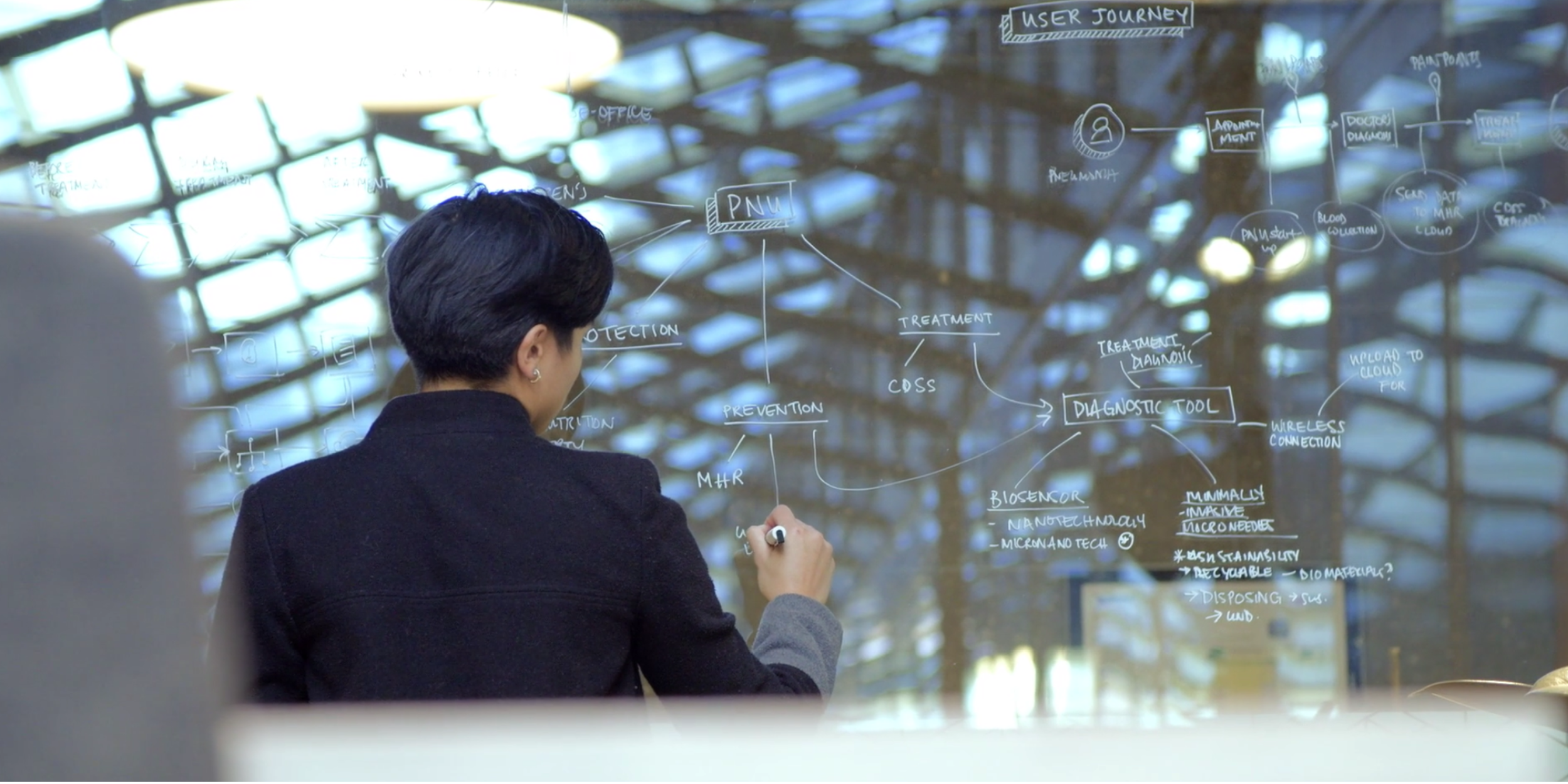PNU
PNU is a noninvasive diagnostic tool for children with pneumonia.
This concept responds to the service design opportunity in children’s health, more specifically in the prevention and treatment of pneumonia with the help of digital health and nanotechnology.

Design Thinking.
The essential ability to combine empathy, creativity and rationality to meet user needs and drive business success.




Summary
Pneumonia kills more children in the world than any other illness. It is caused by either bacteria or viruses and often stem from malnutrition, poverty, or inadequate access to healthcare. Like many illnesses, there are three avenues of combatting pneumonia: protection, prevention, or treatment.
By integrating digital health and the capabilities of RMIT’s Micro- and Nano- Research Facility into my research, I was able to identify possible opportunities that can contribute to the prevention and treatment of pneumonia: prevention through data collection which can enable and advance research especially for MCRI’s Data Science Research Group, and treatment through a more efficient and effective diagnosis of its causes.
There are three main elements that influence my service design concept.
First is the world’s and Australia’s shift towards digital health. You can have an Individual Health Identifier(IHI) which can be used to create your ‘My Health Record’, an online summary of your health information which healthcare providers can access and/or add information to with your permission. We also have the capabilities of CDSS’s, Clinical Decision Support Systems which are applications that analyse data to help healthcare providers make clinical decisions (Rouse, 2014). These assist clinicians in improving the final result of diagnoses by taking into account the patient’s medical history and relevant clinical research.
The second is micro- and nanotechnology advancements that have led to the creation of biosensors which can detect bacteria and viruses, and emit electrical signals that can be turned into data. This element enables the first. With biosensing technologies, we can create minimally-invasive diagnostic tools that are not only effective and efficient but can make use of Big Data as well.
The third are the users. The service must be designed such that it is functional, and simple enough to be used. Keeping in mind that the diagnostic tool will interact with children, products used in the service must be designed such that they are minimally invasive, and are aesthetically child-friendly.
To develop my concept, a few research methods were utilised. Brainstorming and literature reviews kicked me off in building my knowledge of what is already out there and what’s being developed. Interviews gave me a deeper insight into the problem I was trying to solve and the possible opportunities. User profiles, user empathy maps and user journeys which not only helped me to understand my user but also their interaction with my service. Service blueprints and service system mappings helped me to identify gaps in my service and polish my design concept.
All of these led me to my design concept: PNU; a minimally-invasive and efficient diagnostic tool that combats pneumonia through prevention and treatment. It has four main features:
(1) A silicon patch of hollow microneedles which can painlessly extract blood from the child
(2) A biosensor within which bacteria and/or viruses are detected and electrical signal is sent
(3) An antenna that collect and recycles radio waves in its environment to generate power, giving it a possible battery-free feature—this is currently being developed.
(4) A mobile app which receives data from the biosensor, and sends the data along with the patient’s Individual Healthcare Identifier (IHI) to the Department of Health cloud servers. Within these servers, the data is analysed by the CDSS (clinical decision support system) which sends back a report of a diagnosis along with a tailored recommendation of treatment according to the patient’s medical history. This information is then used by the clinician as an aid to making the best clinical decision for treatment.
If the diagnosis results in a notifiable aetiology of pneumonia, this report is sent to the National Notifiable Disease Surveillance System which can use the data to help prevent the spread of the disease in the future. Furthermore, this data can be used to advance scientific and medical research.
The elements in this service explore only very few of applications of existing technologies today. However, it is a good example of how digital health and nanotechnology can improve healthcare most especially through a user-centred approach.

